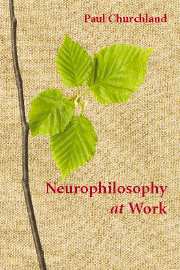Book contents
- Frontmatter
- Contents
- Preface
- Provenances
- 1 Catching Consciousness in a Recurrent Net
- 2 Functionalism at Forty: A Critical Retrospective
- 3 Toward a Cognitive Neurobiology of the Moral Virtues
- 4 Rules, Know-How, and the Future of Moral Cognition
- 5 Science, Religion, and American Educational Policy
- 6 What Happens to Reliabilism When It Is Liberated from the Propositional Attitudes?
- 7 On the Nature of Intelligence: Turing, Church, von Neumann, and the Brain
- 8 Neurosemantics: On the Mapping of Minds and the Portrayal of Worlds
- 9 Chimerical Colors: Some Phenomenological Predictions from Cognitive Neuroscience
- 10 On the Reality (and Diversity) of Objective Colors: How Color-Qualia Space Is a Map of Reflectance-Profile Space
- 11 Into the Brain: Where Philosophy Should Go from Here
- Bibliography
- Index
9 - Chimerical Colors: Some Phenomenological Predictions from Cognitive Neuroscience
Published online by Cambridge University Press: 24 July 2009
- Frontmatter
- Contents
- Preface
- Provenances
- 1 Catching Consciousness in a Recurrent Net
- 2 Functionalism at Forty: A Critical Retrospective
- 3 Toward a Cognitive Neurobiology of the Moral Virtues
- 4 Rules, Know-How, and the Future of Moral Cognition
- 5 Science, Religion, and American Educational Policy
- 6 What Happens to Reliabilism When It Is Liberated from the Propositional Attitudes?
- 7 On the Nature of Intelligence: Turing, Church, von Neumann, and the Brain
- 8 Neurosemantics: On the Mapping of Minds and the Portrayal of Worlds
- 9 Chimerical Colors: Some Phenomenological Predictions from Cognitive Neuroscience
- 10 On the Reality (and Diversity) of Objective Colors: How Color-Qualia Space Is a Map of Reflectance-Profile Space
- 11 Into the Brain: Where Philosophy Should Go from Here
- Bibliography
- Index
Summary
Abstract: The Hurvich-Jameson (H-J) opponent-process network offers a familiar account of the empirical structure of the phenomenological color space for humans, an account with a number of predictive and explanatory virtues. Its successes form the bulk of the existing reasons for suggesting a strict identity between our various color sensations on the one hand, and our various coding vectors across the color-opponent neurons in our primary visual pathways on the other. But antireductionists standardly complain that the systematic parallels discovered by the H-J network are just empirical correspondences, constructed post facto, with no predictive or explanatory purchase on the intrinsic characters of qualia proper. The present paper disputes that complaint, by illustrating that the H-J model yields some novel and unappreciated predictions, and some novel and unappreciated explanations, concerning the qualitative characters of a considerable variety of color sensations possible for human experience, color sensations that normal people have almost certainly never had before, color sensations whose accurate descriptions in ordinary language appear semantically ill-formed or even self-contradictory. Specifically, these ‘impossible’ color sensations are activation-vectors (across our opponent-process neurons) that lie inside the space of neuronally possible activation vectors, but outside the central ‘color spindle’ that confines the familiar range of sensations for possible objective colors. These extraspindle chimerical-color sensations correspond to no color that you will ever see objectively displayed on a physical object. But the H-J model both predicts their existence and explains their highly anomalous qualitative characters in some detail. It also suggests how to produce these rogue sensations by a simple procedure made available in the latter half of this paper.The relevant color plates will allow you to savor these sensations for yourself.
- Type
- Chapter
- Information
- Neurophilosophy at Work , pp. 161 - 197Publisher: Cambridge University PressPrint publication year: 2007



